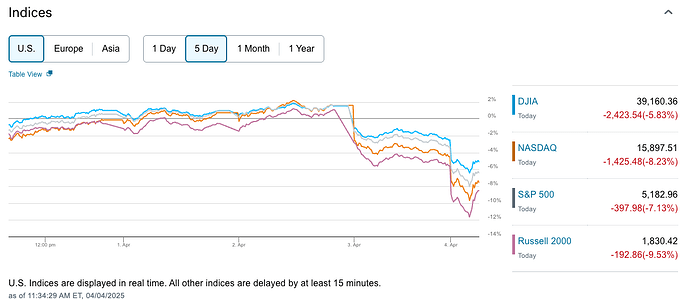The US just implemented as series of tariffs designed to reduce imports from various countries. According to this memo from US Trade Representative:
Reciprocal tariffs are calculated as the tariff rate necessary to balance bilateral trade deficits between the U.S. and each of our trading partners. This calculation assumes that persistent trade deficits are due to a combination of tariff and non-tariff factors that prevent trade from balancing. Tariffs work through direct reductions of imports.
The formula for calculating the new tariffs is:
\tau_i is the tariff applied to each country and \Delta\tau_i is the change in tariff this policy enacted. x_i is the current exports from to the country and m_i is the current imports. So we can rewrite the formula:
But what are \epsilon and \phi? The memo clarifies:
The price elasticity of import demand, ε, was set at 4.
and
The elasticity of import prices with respect to tariffs, φ, is 0.25.
So if we fill in those constants:
Cancelling out the constants:
So for China, which exported $3.58 trillion to the US and imported $2.59 trillion in 2024, the calculation would be:
I’m not sure what numbers were used exactly, but this seems more or less in line with the 34% I saw reported.
